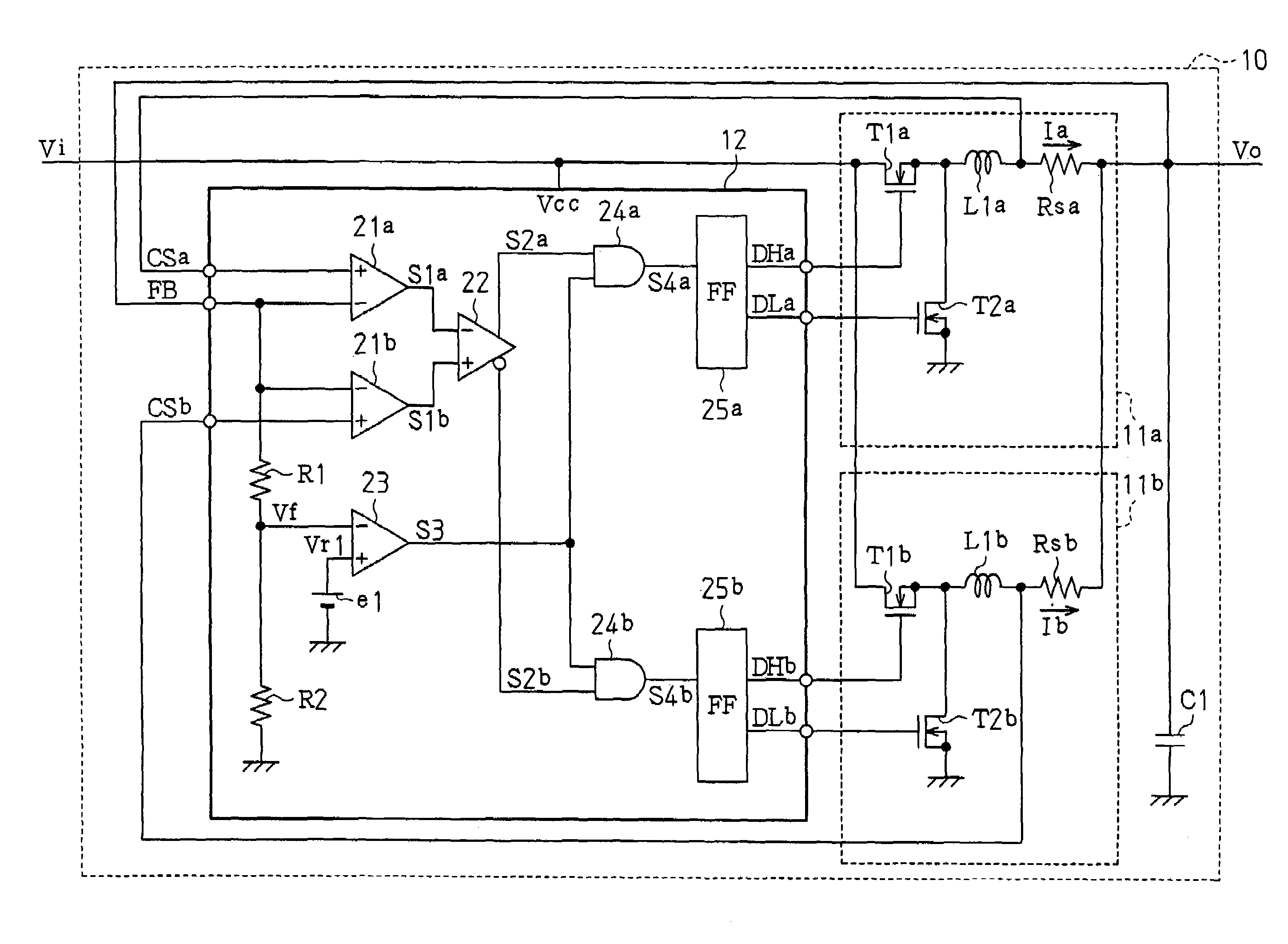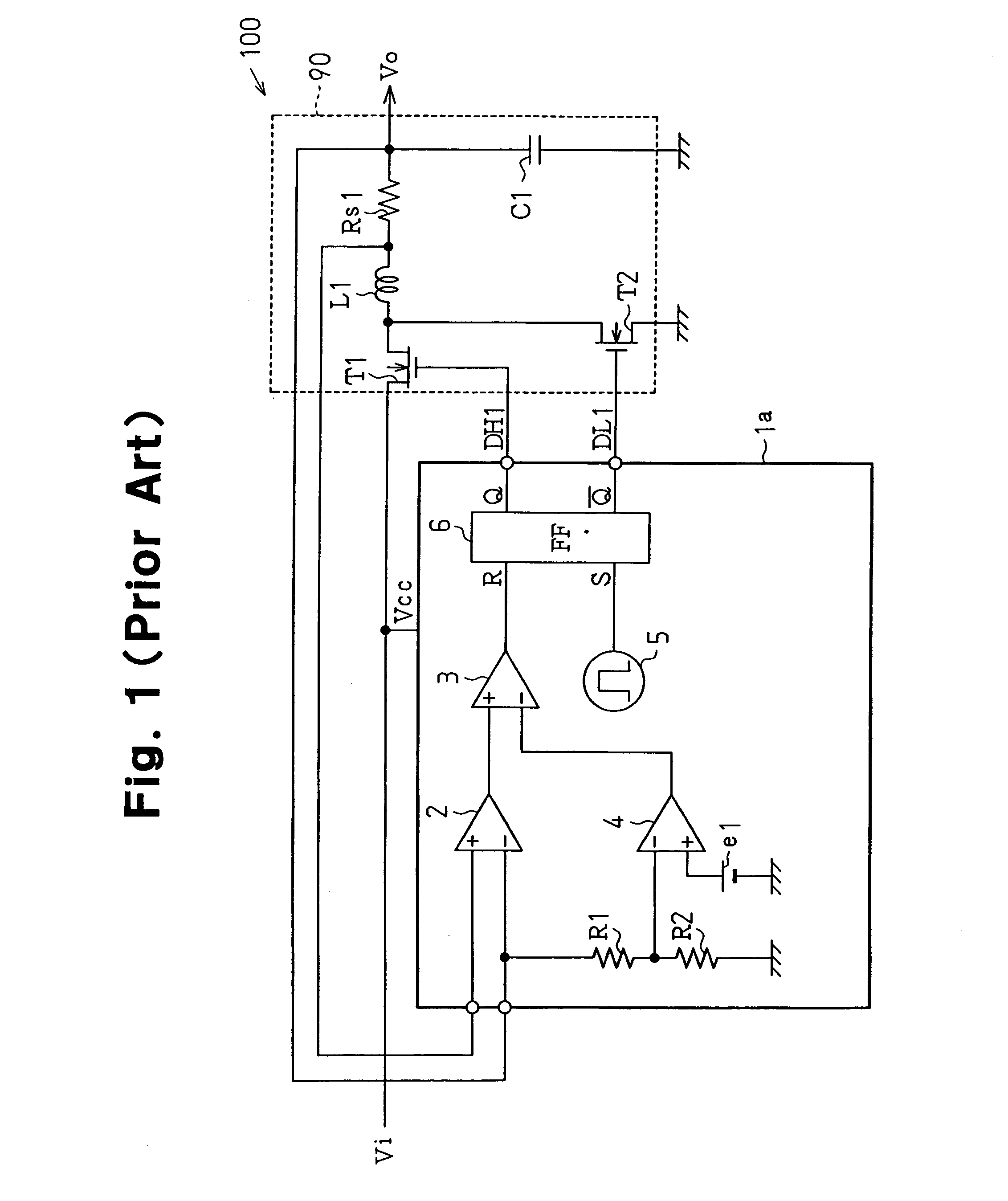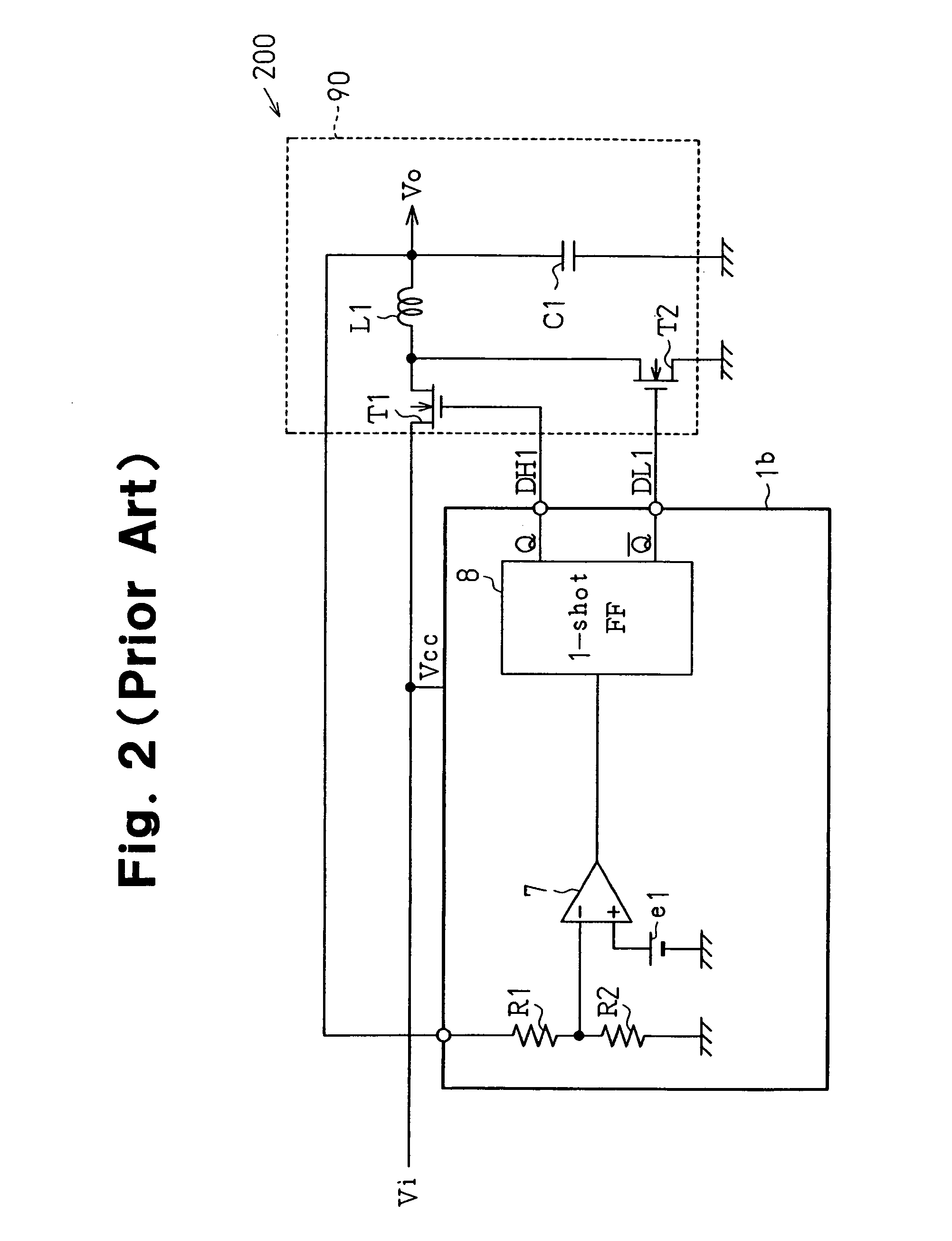Multi-phase DC-DC converter and control circuit for multi-phase DC-DC converter
a control circuit and converter technology, applied in the field of converters, can solve the problems of increasing the switching frequency of the output transistor, the operation efficiency of the output transistor decreases, and the dc—dc converter b>100/b> has a poor responsiveness to a sudden change in load, so as to improve the load responsiveness of the converter, the operating efficiency of the output transistor decreases, and the converter is easy to opera
- Summary
- Abstract
- Description
- Claims
- Application Information
AI Technical Summary
Benefits of technology
Problems solved by technology
Method used
Image
Examples
first embodiment
[0044]FIG. 4 is a schematic circuit diagram of a multi-phase DC—DC converter 10 according to the present invention.
[0045]The DC—DC converter 10 is a self-excited multi-phase DC—DC converter having two phases. The DC—DC converter 10 includes two converter units 11a and 11b, one control unit 12, and a smoothing capacitor C1.
[0046]The first converter unit 11a includes an output transistor T1a, a synchronous rectifier transistor T2a, a choke coil Lla, and a current detection resistor Rsa. The output transistor T1a is configured by an N-channel MOS transistor. The synchronous rectifier transistor T2a is configured by an N-channel MOS transistor. The output transistor T1a has a gate for receiving a control signal DHa from the control unit 12, a drain for receiving an input voltage Vi, and a source connected to the synchronous rectifier transistor T2a. The synchronous rectifier transistor T2a has a gate for receiving a control signal DLa from the control unit 12, a drain connected to the o...
second embodiment
[0069]FIG. 5 is a schematic circuit diagram of a multi-phase DC—DC converter 30 according to the present invention.
[0070]The DC—DC converter 30 is a self-excited multi-phase DC—DC converter having two phases. The DC—DC converter 30 includes two converter units 11a and 11b, one control unit 32, and a smoothing capacitor C1.
[0071]The control unit 32 includes two voltage amplifiers 21a and 21b, a comparator 22, two voltage comparators 23a and 23b, two reference power supplies e1 and e2, two resistors R1 and R2, two AND circuits 24a and 24b, two one-shot flip-flop circuits (hereafter referred to as “FF circuits”) 25a and 25b, and two OR circuits 26a and 26b. The control unit 32 of the second embodiment has a configuration in which the voltage comparator 23b, the reference power supply e2, and the OR circuits 26a and 26b are added to the control unit 12 of the first embodiment.
[0072]The first voltage comparator 23a operates substantially in the same manner as the voltage comparator 23 of...
third embodiment
[0079]FIG. 6 is a schematic circuit diagram of a multi-phase DC—DC converter 40 according to the present invention.
[0080]The DC—DC converter 40 is a self-excited multi-phase DC—DC converter having three phases. The DC—DC converter 40 includes three converter units 11a, 11b, and 11c, one control unit 42, and a smoothing capacitor C1.
[0081]Each of the converter units 11a to 11c has the same configuration. The first converter unit 11a includes an output transistor T1a, a synchronous rectifier transistor T2a, a choke coil L1a, and a current detection resistor Rsa. The output transistor T1a is configured by an N-channel MOS transistor. The synchronous rectifier transistor T2a is configured by an N-channel MOS transistor. The second converter unit 11b includes an output transistor T1b, a synchronous rectifier transistor T2b, a choke coil L1b, and a current detection resistor Rsb. The output transistor T1b is configured by an N-channel MOS transistor. The synchronous rectifier transistor T...
PUM
 Login to View More
Login to View More Abstract
Description
Claims
Application Information
 Login to View More
Login to View More - Generate Ideas
- Intellectual Property
- Life Sciences
- Materials
- Tech Scout
- Unparalleled Data Quality
- Higher Quality Content
- 60% Fewer Hallucinations
Browse by: Latest US Patents, China's latest patents, Technical Efficacy Thesaurus, Application Domain, Technology Topic, Popular Technical Reports.
© 2025 PatSnap. All rights reserved.Legal|Privacy policy|Modern Slavery Act Transparency Statement|Sitemap|About US| Contact US: help@patsnap.com



